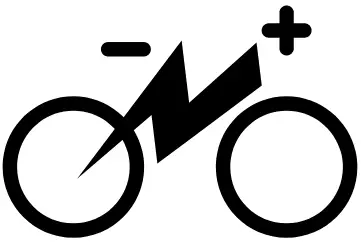We all know that helmets save lives, but did you know that a helmet can reduce the odds of a severe traumatic brain injury by 51% upon impact? Likewise, helmets have also reduced the odds of death by 44%. However, whether or not the helmet saves your life depends on you wearing the right one for the right activity.
In this guide, we’ll take you through everything you need to know about the differences between bike helmets and skate helmets, from their design elements to the functions of each. We will also explain how to know when it’s time to invest in a replacement.
The Differences Between Bike Helmets and Skate Helmets
There are several differences between bike and skate helmets. The biggest difference is that skate helmets are designed to withstand multiple impacts, where bicycle helmets are designed to withstand one impact. This is because bicycle helmets have foam that is designed to compress upon impact.
And this makes sense. Skaters practicing tricks will take a lot of falls, where cyclists aren’t expected to take any.
Here are some other key differences between skate and bike helmets.
Bike helmets:
- Single impact; designed to protect your head by compressing the foam upon impact
- Are more aerodynamic
- Designed to have better ventilation
Skate Helmets:
- Multi-impact, as they’re designed to withstand the typical range of skateboarding falls and crashes
- Cover the back of the head, as riders tend to fall backward
- Generally considered more stylish
But besides these differences, there’s also a lot of similarities. Both helmets are often designed from the same elements, have removable liners, and are often adjustable in similar ways.
The Difference In Head Coverage Between Bike And Skate Helmets

One of the key differences in helmets is the shape. You might be thinking that bike helmets are more aerodynamic. While this is technically true, studies show it has little effect in non-race environments.
So is there a practical reason why skate and bike helmets are shaped differently?
There sure is. Helmets for road-bikes typically don’t cover the lower back of the head. This is because riders don’t often fall backward off the bike. During a crash, a biker is much more likely to continue moving forward due to momentum than fall backward.
However, helmets for BMX and mountain bikes provide protection that will cover the head’s back and the full face. Jumping and moving over uneven terrain at high speed requires more protection as falls can happen in any direction.
Likewise, skate helmets typically protect the lower part of the back of the head because skaters are likely to fall off backward.
The Differences In Style: Bike Helmets vs. Skate Helmets
While safety should be your main priority when selecting a helmet, style does play an important role. I totally get that people want to look and feel good when biking or skating. I helmet becomes part of your style.
If looks are an important priority for you, it has to be said that skate-style helmets are generally thought to look more youthful and ‘street’ looking. The individuals who prefer this type of helmet are usually people such as:
- Casual cyclists
- Commuters
- Mountain Bikers
Skate helmets can be more versatile too. For example, they can also be used for snowboarding and in-line skating. The first question you should always ask yourself is: “Do they provide the right protection for the activity I want to do?”
Why is Ventilation Important When Choosing The Correct Helmet?

Vents are an integral design feature of bike helmets and help to keep the head cool and well-ventilated. Since cyclists travel faster, the vents are designed to keep the air flowing. This is why bike helmets have vents that are in the front and out the back to work with the airflow.
Skate helmets have vents too, but they are often smaller and not designed for air to flow through them as easily.
Sometimes, regardless of the ventilation, helmets can feel warm the longer you wear them due. This is due to the foam lining. Foam retains heat, but with a good ventilation structure, most of this heat should release.
Can You Use a Skateboard Helmet for Biking?

Now, suppose you’re someone who loves both skating and biking. In that case, there are several different helmets that you can purchase that are certified by the manufacturer to meet both the ASTM F1492 helmet standard for skateboards and the CPSC standard for bicycles.
Here are some helmets you can wear for both biking and skating.
- Thousand Helmet (top recommendation)
- Outdoor Master
- Triple Eight
But what if the skate helmet isn’t certified as a bike helmet?
While it would be better than nothing, it’s not a suitable replacement. If you wanted to wear a helmet for both, check out the helmets above.
Why is the Certification Important When it Comes to Helmets?
Certifications are important to help prevent you from getting a skull fracture or a serious brain injury. The good news is all bicycle helmets manufactured after 1999 must meet the Consumer Product Safety Commission standard.
A certified helmet won’t guarantee you won’t suffer a concussion, but they give you the best chance to avoid a more serious head injury.
When a helmet is designed for both skating and cycling, this usually means that they’re also certified as a multi-impact helmet. However, it’s always a good idea to ensure this is the case when you are purchasing your safety equipment.
Here’s a good chart of the type of activity and helmet ratings:
| Activity | Helmet Type | Standard |
| Bicycling Kick Scooter Riding Roller and In-line Skating – Recreational | Bicycle | ASTM F1447, F18981; Snell B-90A, B-95, N-942; CPSC |
| BMX Cycling | BMX | ASTM F2032; CPSC |
| Downhill Mountain Bike Racing | Downhill | ASTM F1952; CPSC |
| Longboarding Roller and In-line Skating – Aggressive/Trick Skateboarding | Skateboard | ASTM F14922; Snell N-942 |
2 A helmet that complies with this standard is designed to withstand more than one moderate impact, but protection is provided for only a limited number of impacts. Replace if visibly damaged (e.g., a cracked shell or crushed liner) and/or when directed by the manufacturer.
When Should You Replace A Helmet?
Since a helmet plays an important role in protecting your head, it’s a good idea to know when exactly you should replace your helmet. No matter what type of helmet you own whether it’s bike, skate, or multi-use; If you are in a high-impact collision, you will need to replace your helmet.
Sometimes, the damage is unseen. For instance, if you fall off your bike and the helmet hits the pavement, you may only see scratches. However, the helmet’s interior components could be damaged.
Bike helmets in particular are not designed to crack, but rather compress upon impact. Once the foam is compressed, it can’t compress again. This is why they are considered one-time use.
The best course of action you can take to know whether or not you need to change your helmet, is to examine it on a regular basis. Several signs to look for include:
- Scrapes, bumps, or cracks on the outer shell
- Cracks or aging signs on the inner shell
- Poorly working straps or buckles
- Adjustment mechanism issues
If your helmet shows any of these signs, it is time to replace it. Likewise, if you notice the foam on the interior of your helmet is beginning to degrade, it’s time to get a new one. A good rule of thumb to follow is to replace a frequently used helmet at least every three years, regardless if it’s been in an accident or not.
The reason for replacing the helmet after three years is not based off of the purchase date, but rather the manufacturing date. Modern helmets typically have the manufacturing date printed on the interior of the helmet so that you can keep track of when to get a new helmet.
However, whether or not you should replace your helmet is a topic that is a bit more complex to warrant a simple answer. There are other aspects you need to take into consideration, such as:
- How often do you use it?
- Did you store it properly while you weren’t using it?
- Does it still fit correctly?
If at any time your helmet was not stored correctly, this can cause damage to your helmet. For example, if your helmet were caught under some heavy boxes for an extended amount of time, it could put too much pressure on the inner foam. The foam will no longer do its job in the event of an accident, which is why it’s important to properly store your helmet when it’s not in use.
Knowing The Difference Between Bike And Skate Helmets Can Potentially Save Your Life
The most important part of wearing a helmet is wearing the right type and wearing it correctly. Bikers travel faster and have a higher risk of hitting the front or top of their heads. On the other hand, skaters are at risk of hitting the back of their heads in a fall.
Each helmet is designed with different functions for the ultimate protection for the user. Ensure that you purchase the correct helmet when you plan to go on biking or skating adventure! This will help you avoid unnecessary medical bills down the road in the event of an accident.

